Wasps are one of the most abundant household pests in the summer. They are usually non-aggressive insects and don’t bite until you tease them. These insects are famous for making irritating and buzzing sounds. As they make sounds, you may wonder, can wasps hear?
Yes, wasps can listen, but they don’t have ears like humans. They have particular sensory organs called Johnston’s organs. These are hair-like structures present on their antenna to detect sounds and vibrations. However, their hearing sense isn’t as good as humans.
Are you interested in knowing more about the hearing sense of wasps and how they perceive sounds? If so, you will get all the necessary information after reading the below details.
What Does Hearing Mean to Wasps?
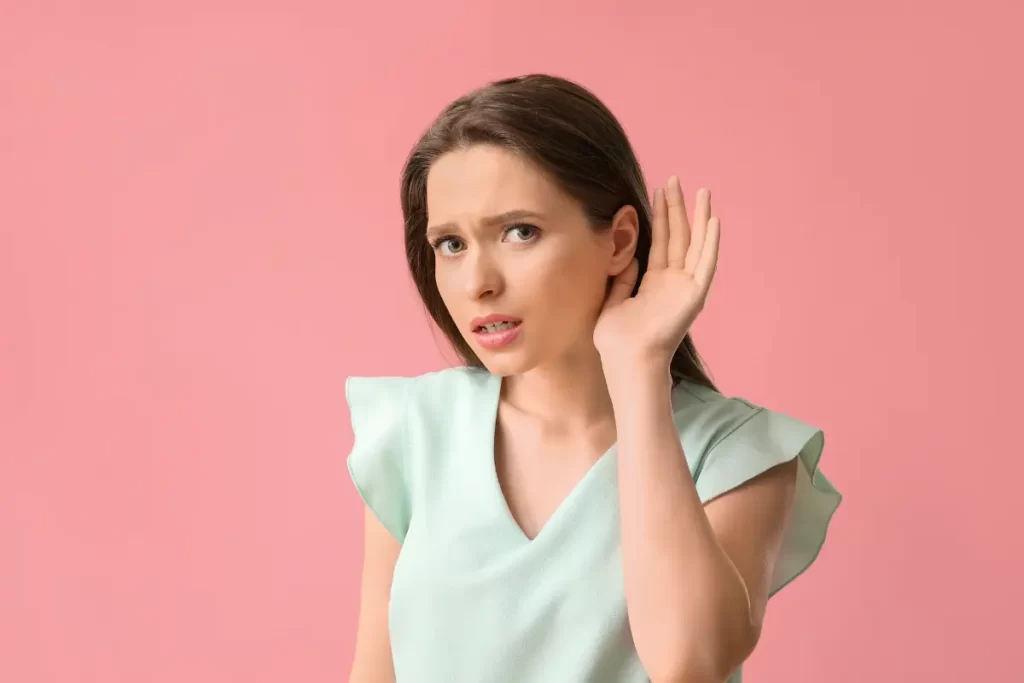
Wasps don’t have the same hearing abilities as humans. They don’t have ears, so they don’t hear in the traditional sense. Instead, wasps are more sensitive to surface and air vibrations.
They use specialized sensory organs known as Johnston’s organs to detect vibrations. These organs are present on their antenna and help them detect vibrations produced by the movement of air or anything else.
According to the Journal Scientific Reports, Johnston’s organ also detects water currents, flight control, and graviception besides perceiving air. Moreover, wasps use these organs to communicate and navigate their colonies, especially during foraging, mating, and nest building.
Although wasps don’t hear like humans, they can recognize multiple patterns and frequencies, which helps them in their social behavior and survival.
Does a Wasp Have Ears?
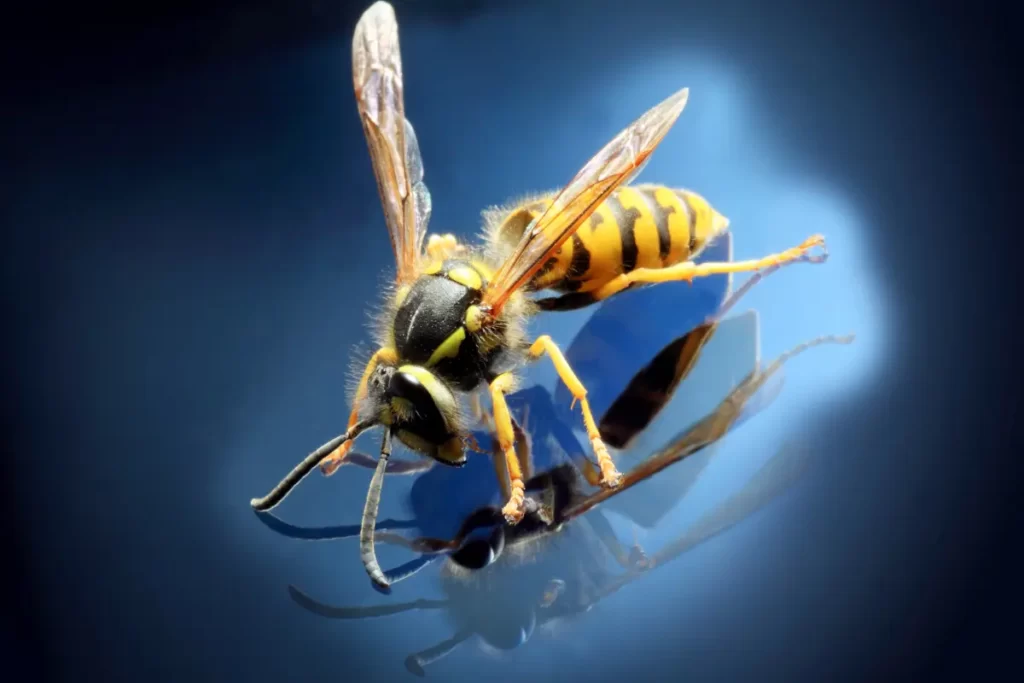
No, wasps don’t have ears like we have. Instead, they use Johnston’s organs on their antennae to detect sounds and vibrations. Moreover, these organs are sensitive to sounds and vibrations, so they help detect pressure and vibrations in the air.
Apart from that, wasps use these organs to communicate with each other through sounds that are inaudible to humans. They can detect vibrations from other wasps, which aids in navigation, mating rituals, and other social behaviors.
Furthermore, compared to other insects, wasps don’t possess a tympanic organ to work as an eardrum. Above all, although wasps don’t have ears, they have additional specialized structures to perceive and respond to sounds and vibrations in their surroundings.
Can Wasps Hear?
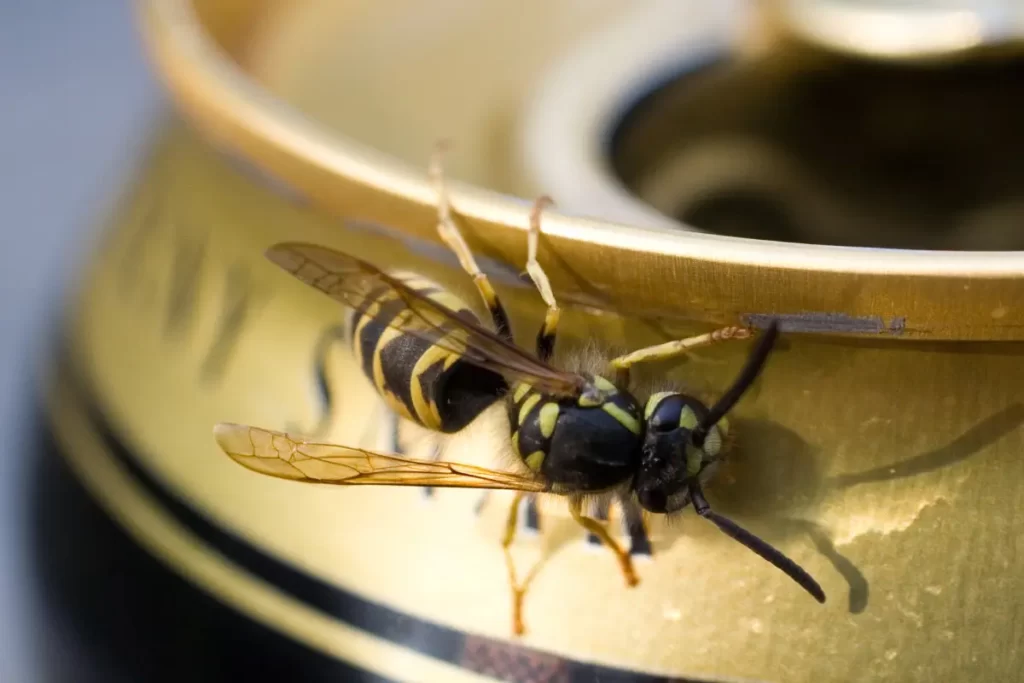
Wasps can hear because they can perceive sound waves. They record and interpret the pressure difference in the air with the help of their Johnston organ. However, their perception is only effective for close range due to the absence of eardrums. While eardrums can detect vibrations very precisely, this is only possible due to the presence of hair.
The most significant frequency that wasps can hear with Johnston’s organ is 500 Hz. Additionally, these hair-like structures not only detect sounds but all types of pressure differences in the air. These noise sources, constraints, and sensory overlapping severely restrict wasps’ hearing. Moreover, the hearing ability of wasps also reduces with increasing distance. Therefore, wasps only hear things that are closer to their range.
Wasp Hearing V/S Human Hearing
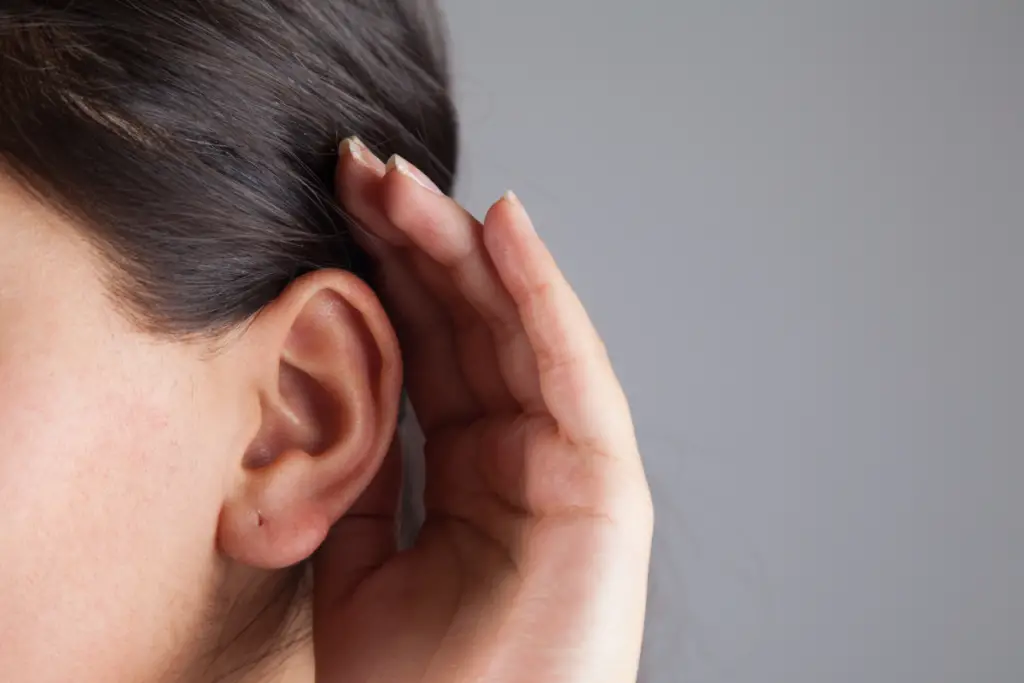
Wasps and human hearing have a lot of differences. The key difference is their distinct anatomy. Humans hear through ears, which consist of three parts: outer, middle, and inner ear. In contrast, wasps use Johnston organs to detect sounds and vibrations. Some other differences are given below:
- Wasps can detect a limited range of sound frequencies, while human detection range is more significant.
- Humans use hearing sense for communication and interaction, while wasps use it for navigation and communication.
- Wasps detect sounds through antennae, while humans compare the input between the outer and inner ear to recognize the sound.
- Our hearing adjusts to selective attention, filtering complex noise. On the other hand, wasps have a more comprehensive hearing range.
- Humans can process complex sounds like speech, music, and multiple environmental noises, while wasps are highly attuned to vibrations in their environment.
How Does a Wasp Communicate?
Wasps communicate through a combination of pheromones and physical behavior. Pheromones are chemical signals that wasps release through their antennae into the environment.
These chemicals convey messages to other colonies about any danger. Wasps also communicate through body language and certain gestures, such as to find food, they use specific gestures.
Moreover, wasps also produce sounds by vibrating their wings and other body parts. They may use these sounds for communication. Some wasps also make dance-like movements to inform other wasps about food sources. Further, physical contact between wasps can also deliver messages.
Thus, although wasps may communicate through sound, they can only do so within a tiny, preset area determined by their hearing organ.
Does a Wasp Hear Us?

Although wasps don’t have a good hearing range, they can hear you if you try to enter their area and provoke them. In this way, they could not stop biting or injecting their stingers into your body. The wasp might hear you, but this is not the case.
Wasps have poor hearing capabilities. The sounds and noises we make don’t affect them. If a wasp stings you and you start screaming, it won’t hear you. Similarly, if you yell at wasps and try to kill them, it won’t listen to you. However, when surprised by a wasp, moving and waving your arms makes them hostile towards you.
Consequently, wasps feel threatened by your rapid arm motions and sting you, believing you are attacking them.
Why Is Hearing Important to Wasps?
Hearing is essential to wasps for the following reasons:
- Communication: Wasps use auditory signals to communicate with each other. Social wasps use acoustic signals to communicate inside their enclosed, gloomy nests. Community events are coordinated through vibrations.
- Detection of Predator and Threat: Wasps can recognize aural cues from possible predators, allowing them to take evasive action or get ready for a defensive response.
- Mating and Reproduction: Male wasps may make unique noises or vibrations to entice females. Female wasps may also select suitable partners based on their capacity to hear the sounds made by possible mates.
- Navigation: Wasps can use specific sound cues to navigate their environment. They may locate their nests or particular foraging locations using auditory markers.
- Awareness of Circumstances: Wasps can adapt to shifting situations due to their ability to perceive sounds in their surroundings. For example, they can pre-determine approaching storms or the presence of other animals, all of which could affect their foraging behavior.
Do Loud Noises Bother Wasps?
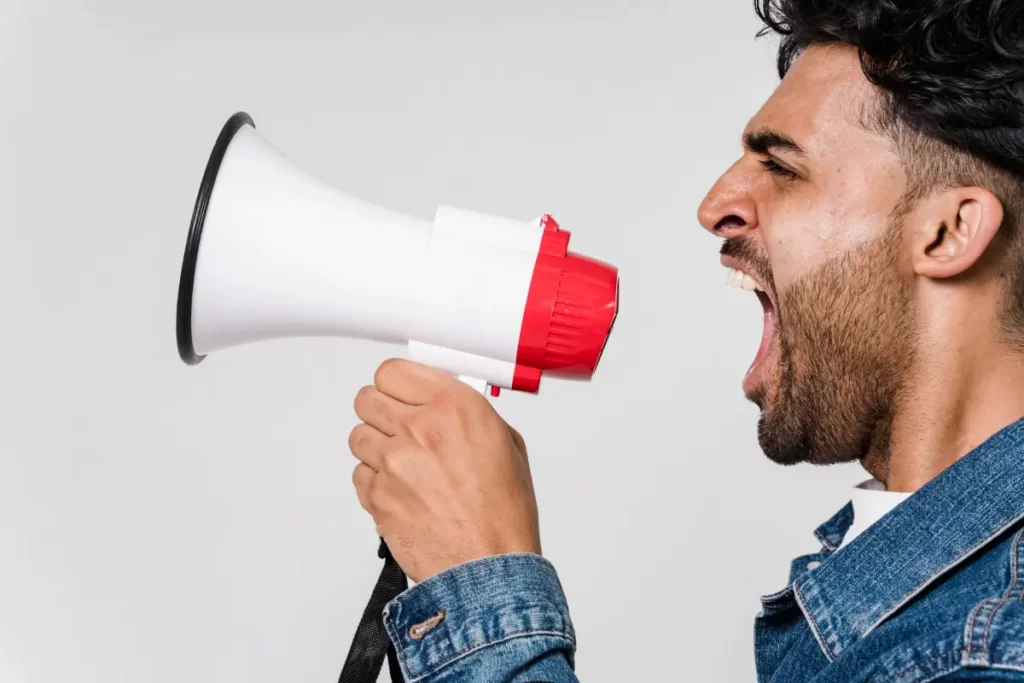
Yes, loud noises bother wasps to some extent, but they are not sacred to them. However, loud noises can potentially disturb wasps. Wasps have tiny hair-like structures on their antennae to navigate and communicate in their colonies, but they don’t bother with loud noises.
Moreover, wasps are aggressive, so strong scents and colors influence their behavior. However, loud noises or sounds don’t trigger their aggressive behavior. Some types of wasps allure Loud Noises. For instance, hornets are attracted to the sounds of lawnmowers because it increases their curiosity about finding something.
Above all, it’s challenging to say whether wasps bother loud noises. Sometimes, they show positive or negative reactions and stay neutral.
Sounds That Wasps Can Make
Wasps make several sounds to communicate with each other and their surrounding environment. Some familiar sounds created by wasps are given below:
Buzzing
You may already be familiar with the buzzing sounds that wasps make with their wings while flying. Wasps have two pairs of wings, which continuously flap when they are in flight, making buzzing noises. The Smithsonian Institute states that Midge is the only insect with the fattest wingbeat of about 62,760 beats per minute.
Although not quick, wasps can beat their wings roughly 200 times each second. Wasps adopt a technique that involves slapping their wings together and spreading them widely to fly. They make a buzzing noise throughout this bustle.
At summertime barbecues and picnics, this sound is all too common. However, the frequency and intensity of buzzing can vary depending on the type of species.
Tapping
Wasps are of two types: social and solitary. Social wasps build their nests, and while doing so, they make tapping noises. The construction of wasp nests involves three groups: builders, water, and pulp foragers.
The pulp foragers strip small pieces of wood from your fences and yards and bring them back to their nests for the builders to employ. The builders then combine the wood with their saliva to create a paper mache-like substance, which they use to add to the current nest.
Builder wasps frequently produce tapping noises when they add the pulp. It occurs when they pack down the pulp or when their mouths contact the area where they add it.
Purring
As wasps have multiple species, yellow-jacket wasps are the only wasps that make a purring sound. This noise comes from a yellowjacket nest within a wall cavity, possibly between studs or under floors. The biggest reason these wasps make a purring sound is their location.
These nasty insects build their nests in your lawns where you mow or in your yard, attics, and voids. The nearby wood vibrates as yellow jacket wings flap within the nest, making a purring Sound. So, if you hear a purring sound in your home, you may likely have an infestation of yellow-jacket wasps.
Popping
This is the sound of the wasp’s larvae sending signals to its queen for food. Queen wasps lay eggs in the spring; during this stage, they construct a nest to take care of eggs. When the eggs hatch, the larvae anticipate having a lot of food, so they may pupate and become adult wasps.
While the larvae plead for food, you may hear popping sounds, like a water drop from a leaking faucet hitting the tub. The larvae mash their jaws and make a popping or dripping sound to let the queen know they are hungry. These noises have a frequency range of 500 to 2,500 Hz.
You can hear these noises in nests with or without a queen, indicating that all wasp larvae are responsible.
Fanning by Male Wasps
Wasps make these sounds to connect with their mates. Males use Wing fanning, which includes creating a particular sound with their wings.
Females take brief flights and make their buzzing sound when they hear males fanning their wings. Together with the pheromones emitted by the females, this sound aids males in finding the females.
Furthermore, fanning is not only associated with wasps; other animals, like birds, dance around or fanning to show off their flashy feathers to potential mates.
Stridulations
These sounds occur when an insect rubs one part of its body (scraper) to another component (file). Every insect makes a different sound as these two body sections scrape against one another. Any two bodily parts, including the legs and wings, can accomplish this.
Depending on the circumstance and the particular species, wasps may stridulate to communicate various things. Although female wasps can stridulate, male wasps often chirp and tweet.
According to the Journal Zoologischer Anzeiger, females make lower frequency noises than males due to their larger and longer files. Other than that, there are hardly any differences in stridulations between male and female wasps.
Electric Fan-Like Sound by Wasp Nest
Wasp nests produce noises akin to those of an oscillating fan you may have in your house. Instead of a buzzing noise that makes your heart race, it makes a steady thrumming sound. Simply said, this results from the wasp’s nest’s architecture and acoustics.
Moreover, wasp nests are often smaller than bee nests, which could be another explanation for the distinctive sound. For instance, paper wasp nests may only have a dozen wasps inside. Yellowjackets typically have more giant nests with hundreds or even thousands of eggs.
What Frequency of Sound Wasps Don’t Like?

Wasps are sensitive to high-pitched or high-frequency sounds, particularly in the ultrasonic range. The frequency of this is typically higher than 20,000 hertz (Hz), which is the upper limit of what the human ear can hear.
Wasps’ response varies depending on various criteria such as the species, age, and gender; thus, there is no precise frequency or pitch they don’t like.
Certain noises, such as those produced by machinery and equipment like lawnmowers and vacuum cleaners, can irritate wasps and make them more hostile. These sounds imitate the low-frequency vibrations produced by other wasps’ wings, which causes the insects to react.
Thus, due to their sensitivity to certain noises and vibrations, wasps might be deterred from an area by certain natural sounds and scents.
Evidence of Wasps Reacting to Sounds
Wasps’ response to sounds depends on acoustic information. Following are a few evidences of wasps’ reaction to sounds and noises:
- Wasp antennae can detect oscillations in air particles up to 1000 Hz, proving they can hear these sounds.
- Paper wasps rhythmically respond to each other’s patterns by tapping their nests to signify danger.
- Wasps have auditory perception as they instinctively avoid high-intensity ultrasonic frequencies that could harm tissues.
- Specific frequencies of buzzing stimulate wasps’s aggressive behavior as they are threat indicators.
- Most female parasitoid wasps can tune the frequency of vibrations created by the hidden hosts that help find them.
- Moreover, wasps alter their behavior in response to wind-induced noise and bird calls.
Applications of Wasp Hearing Sensitivity
Wasp hearing abilities have the following exciting applications:
- You can repel wasps by using high-frequency buzzing sounds. These buzzing sounds irritate wasps, and they’ll not dare to infest that area.
- Vibrational traps have sounded like potential prey of wasps. Wasps mimic these sounds as their prey and get trapped.
- By listening to specific vibrational patterns of wasps, you can locate their nests for removal.
- Pest control professionals can listen for activity by bugging locations where wasp nests are hidden.
- Furthermore, sonic deterrents drive away wasps by creating zones of noise-induced discomfort in yards, gardens, and attics.
These are some applications of wasp hearing sensitivity. However, researchers are continuing to do studies for further implications.
Hearing Differences Among Wasp Species
Although all wasps can detect sounds, their acoustic characteristics can vary depending on the frequency of sounds and the type of species. Below are some critical differences among wasp species:
- Solitary wasps, like spiders, depend on their hearing abilities to find their prey. They need precise sound localization to survive.
- Parasitoid wasps can precisely tune specific prey frequencies by filtering out other noises. However, auditory accuracy is necessary for host-seeking.
- Hearing is a vital tool for social wasps to understand the complex communication of their colonies. They interpret subtle cues from other team members.
- Moreover, more giant wasps can comprehend lower frequencies than smaller wasps.
- Nocturnal wasps that remain active at night have highly developed hearing sense for navigation in the dark.
- Mason wasps evaluate the viability of holes for nesting by listening to sound signals. At the same time, the other wasps don’t have such ability.
Relationship b/w Wasps and Ultrasound
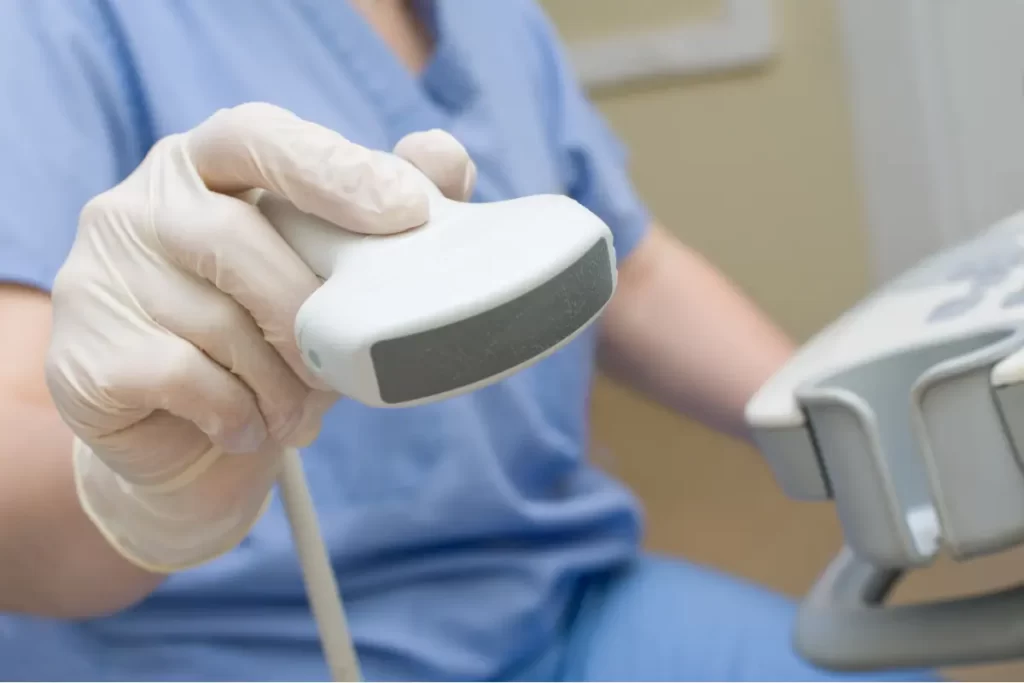
Ultrasound has a frequency greater than 20,000 Hz, so it’s outside the audible range of humans. Animals use these tones for localization as well as communication. Most ultrasonic devices are available to deter animals and insects. All animals must first perceive the ultrasound to produce an effect.
However, the wasp hearing is limited to 500 Hz frequency. That’s why they can’t perceive ultrasound. Consequently, ultrasonic devices don’t affect wasps. Moreover, there is no scientific foundation for the devices, which have little effect.
Thus, unlike other species, wasps don’t directly interact biologically or ecologically with ultrasound. Still, they are nonetheless able to sense vibrations and use a variety of communication methods, including audible noises.
Final Verdict:
Wasps are among the most abundant and annoying summer pests. They can make certain noises, buzzing, purring, and taping. As they can make sounds, they can also hear but lack ears. They use a specialized organ called Johnston’s organ located on their antennae for hearing.
However, every wasp species have different hearing senses depending on the frequency, amplitude, and intensity of sounds. Moreover, loud noises like the sound of lawnmowers can make them aggressive and aggravate their defensive behavior. Therefore, don’t underestimate the auditory abilities of wasps; they don’t have ears but are not deaf.

